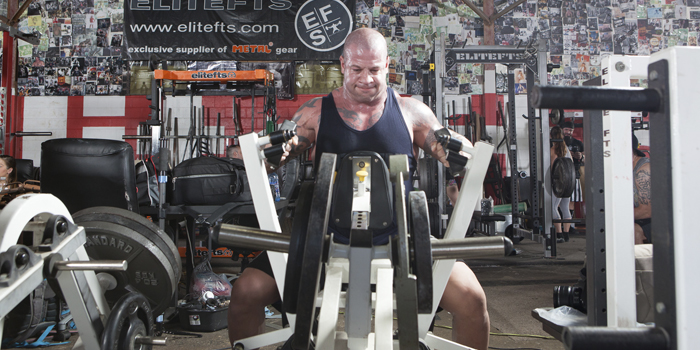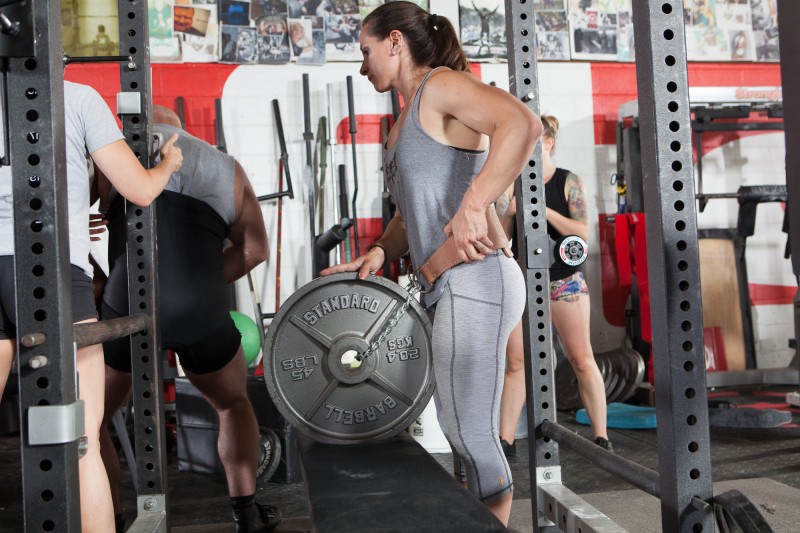
Recent research has identified a dose-response relationship between training volume and hypertrophy. The more volume you do without exceeding your capacity to recover, the more you grow. Unfortunately, most people are misinterpreting this information and getting inferior results. They make the mistake of doing junk volume. As the name implies, junk volume is training volume with little to no benefit. It is just a waste of time and effort. Don’t make this mistake. Instead, do as much effective volume as possible. In this article, I’ll explain how to maximize your effective volume and minimize junk volume.
What is effective volume?
Effective volume is the amount of training that maximally stimulates the anabolic processes. In research, muscle protein synthesis (MPS), is used as a proxy for muscle growth. So, effective volume is the minimum amount of work required to maximize MPS.
What is junk volume?
Junk volume, or waste volume, is any extra training done for a muscle group that has already been stimulated sufficiently to maximize the anabolic pathways. Sets done after this point have little to no additive effect to your gains and simply eat into your ability to recover.
A Practical Example of How This Problem Manifests
You hear more volume equates to better gains, so you do more work. You add sets to training sessions. On the surface, this is a logical decision. The problem is that these added sets are probably not having a positive effect on your results. The reason for this is that research has consistently shown that there is a threshold of training per session that maximizes anabolic signaling, namely your MPS response. Adding sets over and above this threshold will not help you gain additional muscle. In fact, a meta-analysis by Wernbom and colleagues found that there was an upper limit to muscle growth stimulated per session. This finding was consistent with both low and high frequency training. Regardless of how hard you train within a session, there is only so much muscle you can build as a consequence of that workout. Trashing a muscle doesn’t cause more growth. As Lee Haney once said, “stimulate don’t annihilate.”
RELATED: 16-Week Powerlifting/Bodybuilding Hybrid Program
Current research indicates that anything between three to 10 sets per body part, per session, is sufficient to maximize MPS. I realize this is a broad range, but it is impossible to establish an exact number, as inter-individual variability (the difference between one person and another) is too great to do so. This is why research should act as a compass to guide your training rather than a map with an exact route to your destination. We can, however, determine some approximate upper limits based on the available data. It seems that most people benefit from up to a maximum of 10 sets per body part, per session. As far as hypertrophy goes, diminishing returns will occur after this point.
Bodybuilders tend to do a vast array of exercises for each body part. They often aim to stimulate a muscle from every conceivable angle every time they train it. To achieve this, a combination of free weights, machines, compound movements, and isolation lifts are performed. Consequently, they regularly do four, five, or even six exercises per body part, per session, and do three or more sets of each. Thus, they perform anything from 12 to 18 sets per muscle group (often more) each time they train it. Based on the available evidence, this is comfortably more than is needed to maximize MPS in a single session. These extra sets are a waste of time and energy.
The result of doing all these extra sets is that you get no difference in hypertrophy, but you do generate more fatigue. This extra fatigue slows the recovery process, limits how much additional training you can do that week, and delays when you can hit that muscle again. That is one hell of a catabolic trio!
The Solution: Increased Training Frequency
To get an optimal hypertrophy stimulus, you should do as much effective volume as possible and try to eradicate junk volume. To achieve this, avoid the common mistake most lifters make when adding volume. People tend to think only in a per-session basis, as opposed to a considering total weekly volume. Consequently, folks just maintain their existing training split and add sets to each training session. Following this approach tends to lead to an accumulation of junk volume.
Add effective volume by increasing your training frequency for each muscle. Instead of training it once a week with 18 sets, do three workouts of six sets. In fact, you could probably tolerate three sessions of eight sets. This significantly increases your weekly training volume (24 sets versus 18 sets), while more evenly distributing your training. The result of this is that you reach the threshold to maximize MPS three times a week rather than once. More muscle building workouts each week adds up to more gains. Think of it this way: with a once-weekly frequency a muscle has 52 growth opportunities per year. With a three times weekly strategy you get 156 muscle-building stimuli per year. Which do you think will cause more growth? By following a higher frequency approach, you avoid junk volume. This is good news for the muscle in question and all of the others too. Why? Well, if you generate less fatigue you have more energy and focus to hit the other body parts. If you annihilate a body part, it has both local and systemic consequence. Thus, trashing a muscle with junk volume not only shortchanges your results for that muscle, but also limits your capacity to train other body parts effectively.
You should structure your training so that you can get in, stimulate a muscle to maximize anabolic pathways and then, get out. To put the pieces of this puzzle together, here is an example training plan that aims to do exactly that.
Guidelines for achieving effective volume:
- Train each muscle group three times each week
- Use one to two exercises per session, per muscle group (two for bigger muscles)
- Perform 40 to 70 total reps per muscle group per session
- Achieve this rep range across six to 10 sets
- Follow a push/pull split
- Pushing muscles include quads, chest, triceps, and anterior delts
- Pulling muscles include hamstrings, back, biceps, and rear delts
Program Sample
Day 1 — Push
A. Squats — 4x6
B. Leg Press — 3x8
C. Incline Bench — 4x6
D. Dumbbell Bench Press — 3x8
E. Dumbbell Skullcrushers — 4x8
Day 2 — Pull
A. Leg Curls — 4x6
B. Romanian Deadlifts — 3x8
C. Chins — 4x6
D. Dumbbell Single-Arm Rows — 3x8
E. Dumbbell Curls — 4x8
Day 3 — Push
A. Front Squat — 3x8
B. Bulgarian Split Squats — 3x10
C. Dumbbell Shoulder Press — 3x8
D. Machine Chest Press — 3x10
E. Dips — 4x12
Day 4 — Pull
A. GHR — 3x8
B. 45-Degree Back Extension — 3x10
C. Pronated Seated Rows — 3x8
D. Lat Pulldowns — 3x10
E. Incline Dumbbell Curls — 4x12
Day 5 — Push
A. Hack Squats — 3x10
B. Leg Extension — 3x12
C. Incline Bench — 3x10
D. Machine Flyes — 3x12
E. Rope Pressdowns — 3x15
Day 6 — Pull
A. Seated Leg Curls — 3x10
B. Back Extension — 3x12
C. Low Rows — 3x10
D. Upright Rows — 3x12
E. Dumbbell Spider Curls — 3x15
References
- Hackett DA, Johnson NA, Chow C-M. Training practices and ergogenic aids used by male bodybuilders. J Strength Cond Res.2013;27:1609–17.13.
- Kumar V, Atherton PJ, Selby A, et al. Muscle protein synthetic responses to exercise: effects of age, volume, and intensity. J Gerontol A Biol Sci Med Sci. 2012;67:1170–7.
- Schoenfeld BJ, Ogborn D, Krieger JW. Effects of resistance training frequency on measures of muscle hypertrophy: a systematic review and meta-analysis. Sports Med. 2016; 46(11):1689-1697
- Schoenfeld BJ, Ratamess NA, Peterson MD, et al. Influence of resistance training frequency on muscular adaptations in well-trained men. J Strength Cond Res. 2015;29:1821–9.
- Wernbom M, Augustsson J, Thomee R. The influence of frequency, intensity, volume and mode of strength training on whole muscle cross-sectional area in humans. Sports Med.2007;37:225–64.
Tom MacCormick is a former skinny kid who was told he was too small to make it as a rugby player. Since then he has added over 40 pounds to his frame and helped hundreds of clients build muscle and burn fat. Tom has earned a BSc in Sports Science and Coaching, an MSc in Strength and Conditioning, has undertaken countless professional courses, seminars, and workshops, and carried out over 10,000 hours of personal training sessions. More recently, Tom founded Flat Whites Free Weights to provide a hub for his online clients and to share his thoughts on training, nutrition, and the ultimate pre-workout supplement, coffee.











4 Comments